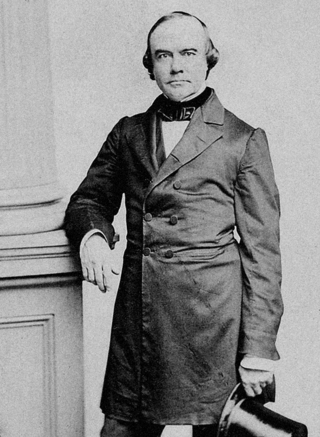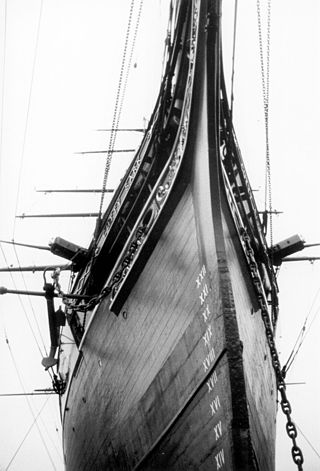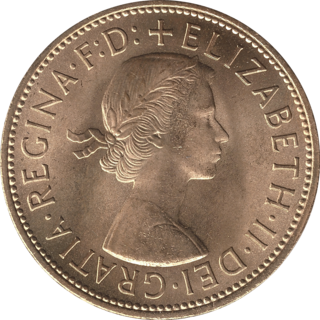Related Research Articles

Brass is an alloy of copper (Cu) and zinc (Zn), in proportions which can be varied to achieve different colours and mechanical, electrical, and chemical properties, but copper typically has the larger proportion. In use since prehistoric times, it is a substitutional alloy: atoms of the two constituents may replace each other within the same crystal structure.

Electroplating, also known as electrochemical deposition or electrodeposition, is a process for producing a metal coating on a solid substrate through the reduction of cations of that metal by means of a direct electric current. The part to be coated acts as the cathode of an electrolytic cell; the electrolyte is a solution of a salt of the metal to be coated; and the anode is usually either a block of that metal, or of some inert conductive material. The current is provided by an external power supply.

A bullet is a kinetic projectile, a component of firearm ammunition that is shot from a gun barrel. They are made of a variety of materials, such as copper, lead, steel, polymer, rubber and even wax; and are made in various shapes and constructions, including specialized functions such as hunting, target shooting, training, and combat. Bullets are often tapered, making them more aerodynamic. Bullet size is expressed by weight and diameter in both imperial and metric measurement systems. Bullets do not normally contain explosives but strike or damage the intended target by transferring kinetic energy upon impact and penetration.

The Linotype machine is a "line casting" machine used in printing; manufactured and sold by the former Mergenthaler Linotype Company and related companies. It was a hot metal typesetting system that cast lines of metal type for individual uses. Linotype became one of the mainstay methods to set type, especially small-size body text, for newspapers, magazines, and posters from the late 19th century to the 1970s and 1980s, when it was largely replaced by phototypesetting and digital typesetting. The name of the machine comes from the fact that it produces an entire line of metal type at once, hence a line-o'-type. It was a significant improvement over the previous industry standard of manual, letter-by-letter typesetting using a composing stick and shallow subdivided trays, called "cases".

Cookware and bakeware is food preparation equipment, such as cooking pots, pans, baking sheets etc. used in kitchens. Cookware is used on a stove or range cooktop, while bakeware is used in an oven. Some utensils are considered both cookware and bakeware.

Float glass is a sheet of glass made by floating molten glass on a bed of molten metal, typically tin, although lead and other various low-melting-point alloys were used in the past. This method gives the sheet uniform thickness and very flat surfaces.

A steel can, tin can, tin, steel packaging, or can is a container for the distribution or storage of goods, made of thin metal. Many cans require opening by cutting the "end" open; others have removable covers. They can store a broad variety of contents: food, beverages, oil, chemicals, etc. Steel cans are made of tinplate or of tin-free steel. In some dialects, even aluminium cans are called "tin cans".

Benjamin Robbins Curtis was an American lawyer and judge. He served as an associate justice of the United States Supreme Court from 1851 to 1857. Curtis was the first and only Whig justice of the Supreme Court, and was also the first Supreme Court justice to have a formal law degree. He is often remembered as one of the two dissenters in Dred Scott v. Sandford (1857).

In printing and typography, hot metal typesetting is a technology for typesetting text in letterpress printing. This method injects molten type metal into a mold that has the shape of one or more glyphs. The resulting sorts or slugs are later used to press ink onto paper. Normally the typecasting machine would be controlled by a keyboard or by a paper tape.

Chad Valley is a long-established brand of toys in the United Kingdom owned by Sainsbury's.

A Mason jar, also known as a canning jar or fruit jar, is a glass jar used in home canning to preserve food. It was named after American tinsmith John Landis Mason, who patented it in 1858. The jar's mouth has a screw thread on its outer perimeter to accept a metal ring or "band". The band, when screwed down, presses a separate stamped steel disc-shaped lid against the jar's rim.

The invention of the telephone was the culmination of work done by more than one individual, and led to an array of lawsuits relating to the patent claims of several individuals and numerous companies.

Muntz metal is an alpha-beta brass alloy composed of approximately 60% copper, 40% zinc and a trace of iron. It is named after George Fredrick Muntz, a metal-roller of Birmingham, England, who commercialised the alloy following his patent of 1832.

A tinsmith is a person who makes and repairs things made of tin or other light metals. The profession may sometimes also be known as a tinner, tinker, tinman, or tinplate worker; whitesmith may also refer to this profession, though the same word may also refer to an unrelated specialty of iron-smithing. By extension it can also refer to the person who deals in tinware, or tin plate. Tinsmith was a common occupation in pre-industrial times.

A tin ceiling is an architectural element, consisting of a ceiling finished with plates of tin with designs pressed into them, that was very popular in Victorian buildings in North America in the late 19th and early 20th century. They were also popular in Australia where they were commonly known as pressed metal ceilings or Wunderlich ceilings. They were also used in South Africa.

The British pre-decimal penny was a denomination of sterling coinage worth 1⁄240 of one pound or 1⁄12 of one shilling. Its symbol was d, from the Roman denarius. It was a continuation of the earlier English penny, and in Scotland it had the same monetary value as one pre-1707 Scottish shilling. The penny was originally minted in silver, but from the late 18th century it was minted in copper, and then after 1860 in bronze.
Albert Raymond Blackburn was a British Labour Party politician who served as Member of Parliament for the Birmingham King's Norton and Birmingham Northfield constituencies.

A cast bullet is made by allowing molten metal to solidify in a mold. Most cast bullets are made of lead alloyed with tin and antimony; but zinc alloys have been used when lead is scarce, and may be used again in response to concerns about lead toxicity. Most commercial bullet manufacturers use swaging in preference to casting, but bullet casting remains popular with handloaders.
Bowman v. Monsanto Co., 569 U.S. 278 (2013), was a United States Supreme Court patent decision in which the Court unanimously affirmed the decision of the Federal Circuit that the patent exhaustion doctrine does not permit a farmer to plant and grow saved, patented seeds without the patent owner's permission. The case arose after Vernon Hugh Bowman, an Indiana farmer, bought transgenic soybean crop seeds from a local grain elevator for his second crop of the season. Monsanto originally sold the seed from which these soybeans were grown to farmers under a limited use license that prohibited the farmer-buyer from using the seeds for more than a single season or from saving any seed produced from the crop for replanting. The farmers sold their soybean crops to the local grain elevator, from which Bowman then bought them. After Bowman replanted the crop seeds for his second harvest, Monsanto filed a lawsuit claiming that he infringed on their patents by replanting soybeans without a license. In response, Bowman argued that Monsanto's claims were barred under the doctrine of patent exhaustion, because all future generations of soybeans were embodied in the first generation that was originally sold.
Thomas Skinner was an etcher, inventor and amateur oil-painter in Sheffield, West Riding of Yorkshire, England. During the 1840s he invented a method by which the mass production of etched designs on steel blades could be facilitated by means of paper transfers. The British and American patents brought him a good income, but he devoted his life to developing the method. After he was widowed he was killed by arsenic poisoning at the hands of his housekeeper Kate Dover.
References
- 1 2 3 The Monthly Magazine. R. Phillips. 1805. pp. 250–.
- 1 2 Ellis, Thomas Flower; Blackburn, Colin Blackburn Baron (1865). Reports of Cases Argued and Determined in the Court of Queen's Bench and the Court of Exchequer Chamber on Error from the Court of Queen's Bench: With Tables of the Names of the Cases Argued and Cited, and the Principal Matters [1852-1858]. T. and J.W. Johnson & Company. pp. 923–937. Retrieved 13 May 2017.
- 1 2 Showell's Dictionary of Birmingham. Cornish Brothers. 1885. p. 5.
- ↑ "Albion metal – rupertharris". Rupert Harris Conservation Ltd. Retrieved 13 May 2017.
- ↑ The Mechanics' Magazine. Robertson, Brooman, and Company. 1857. pp. 607–.